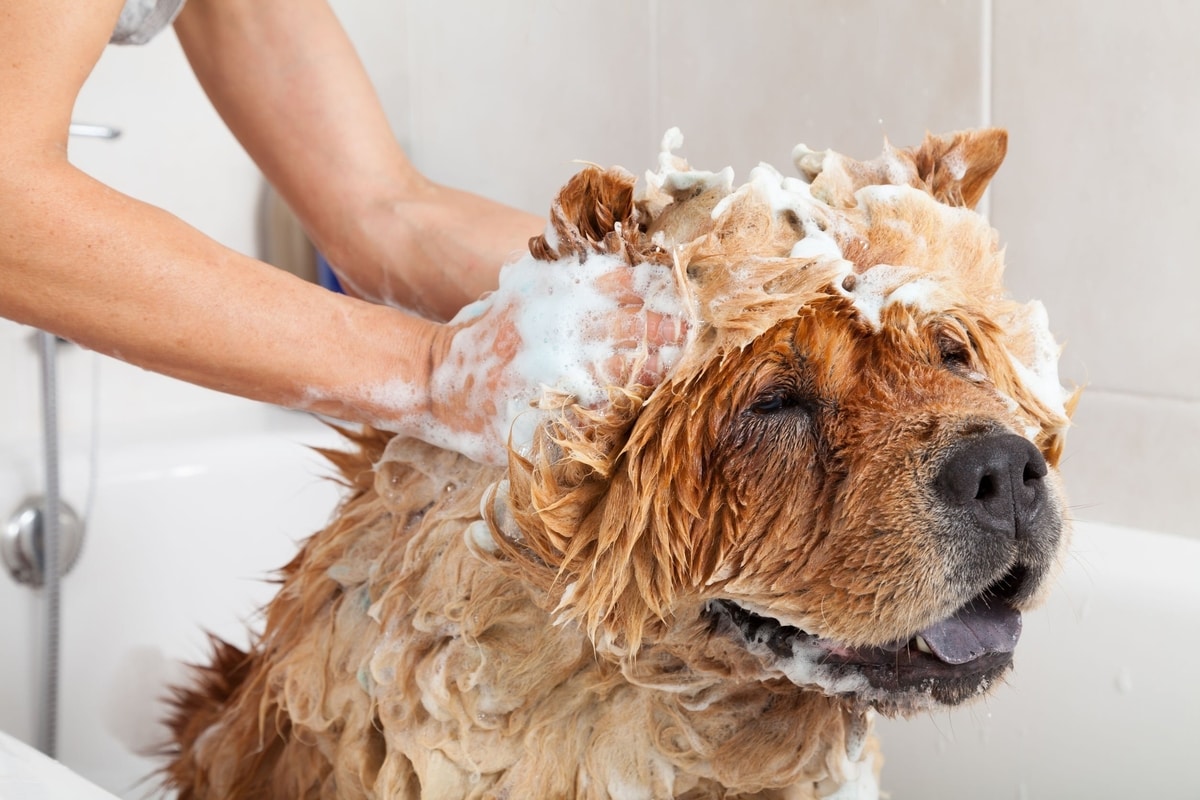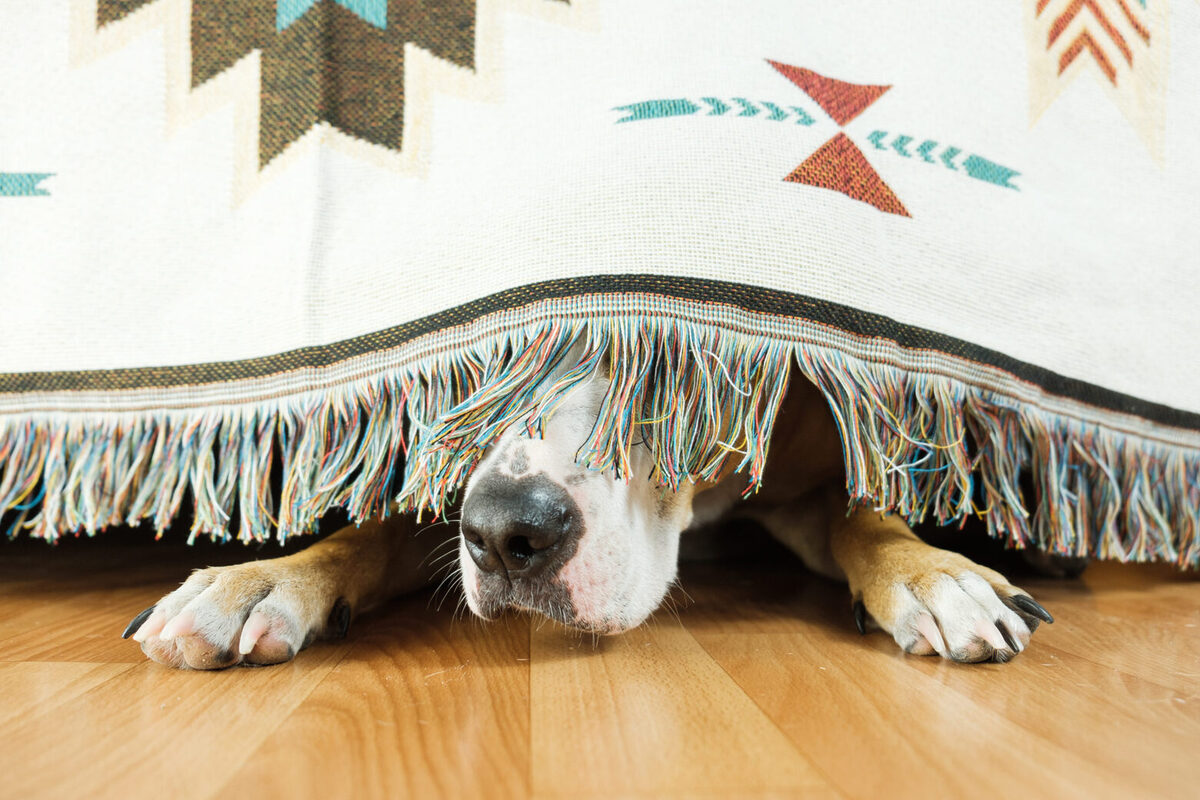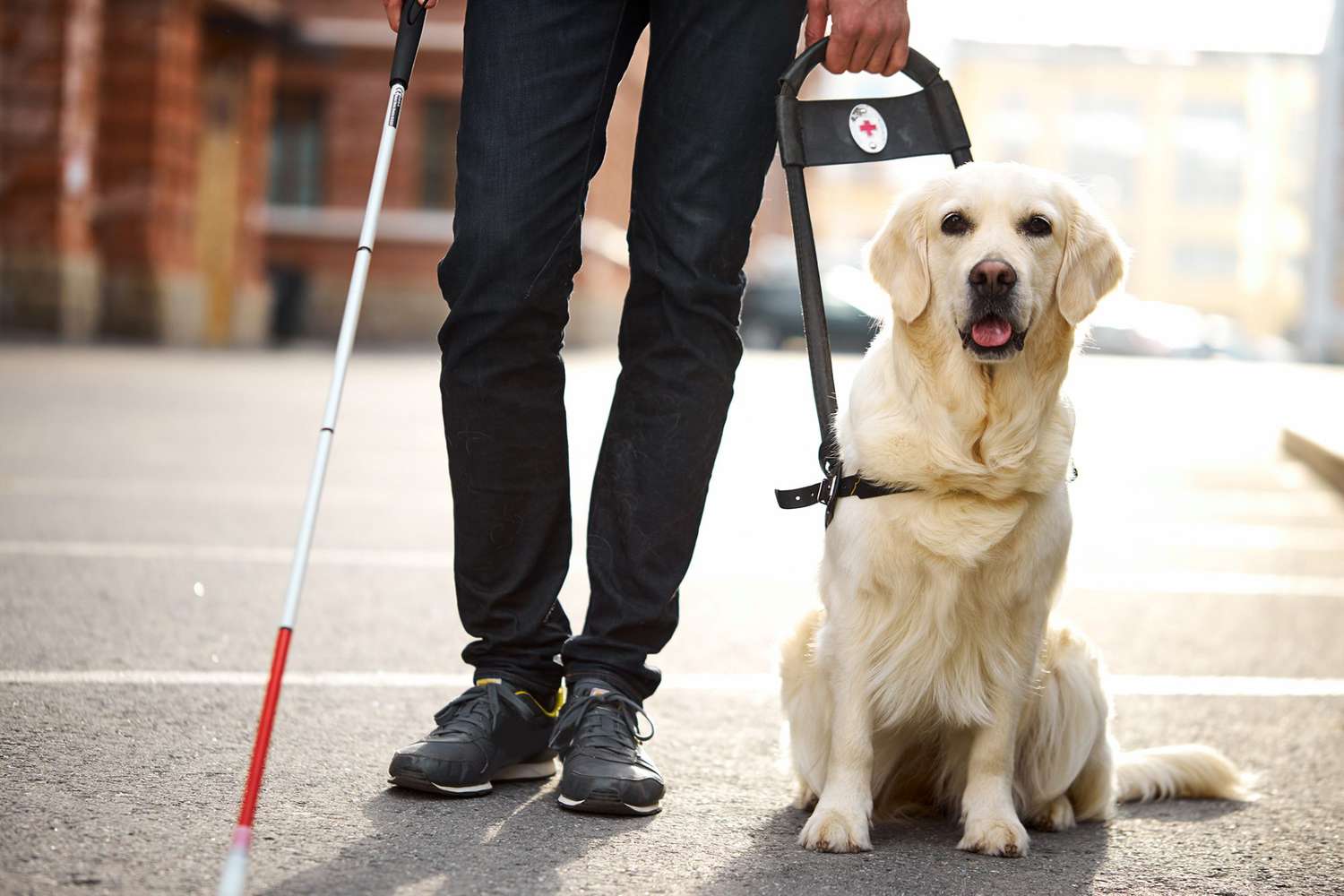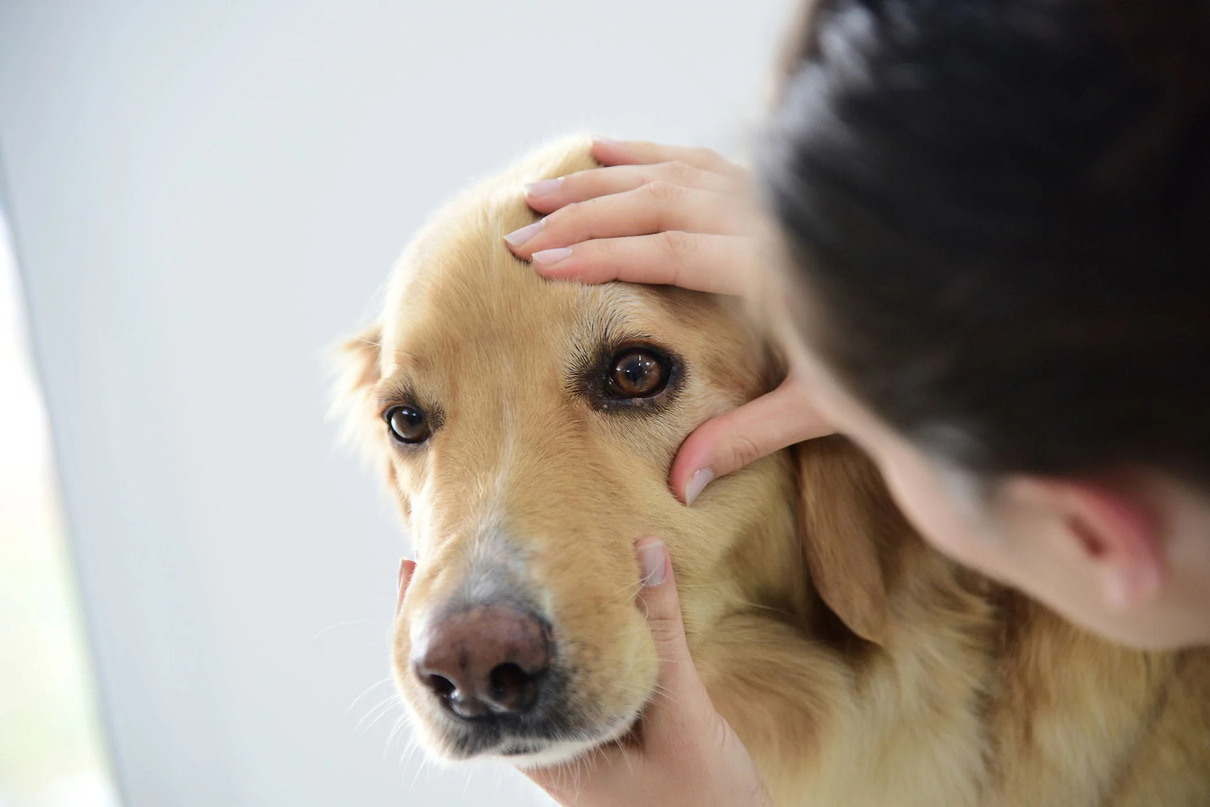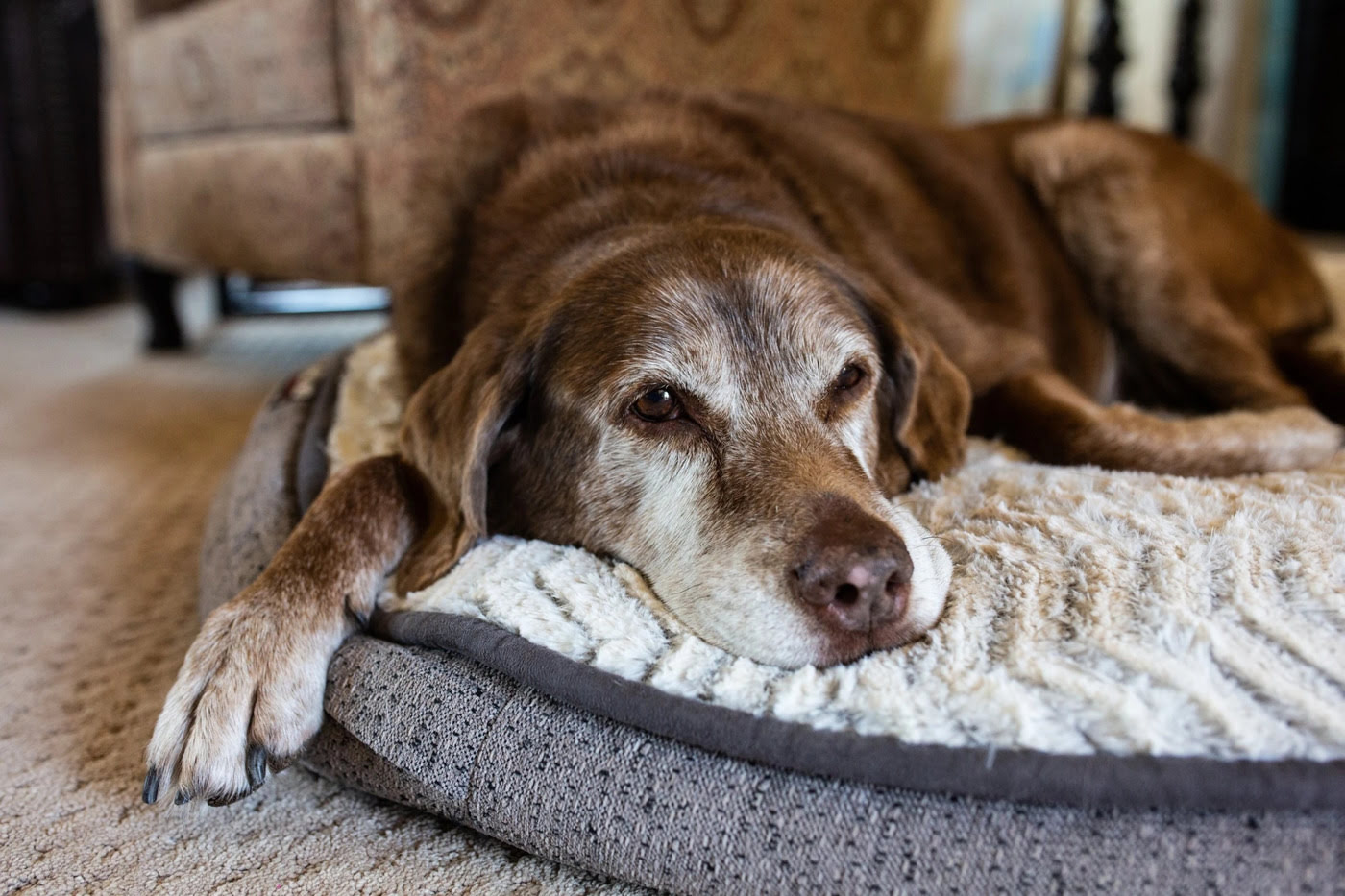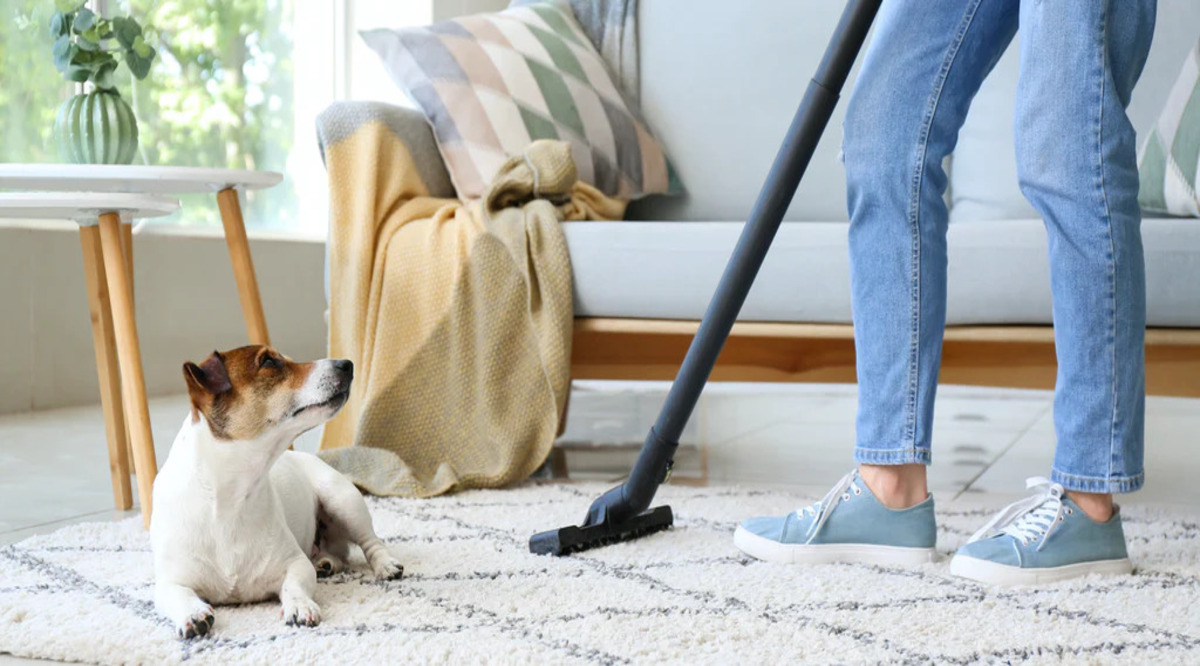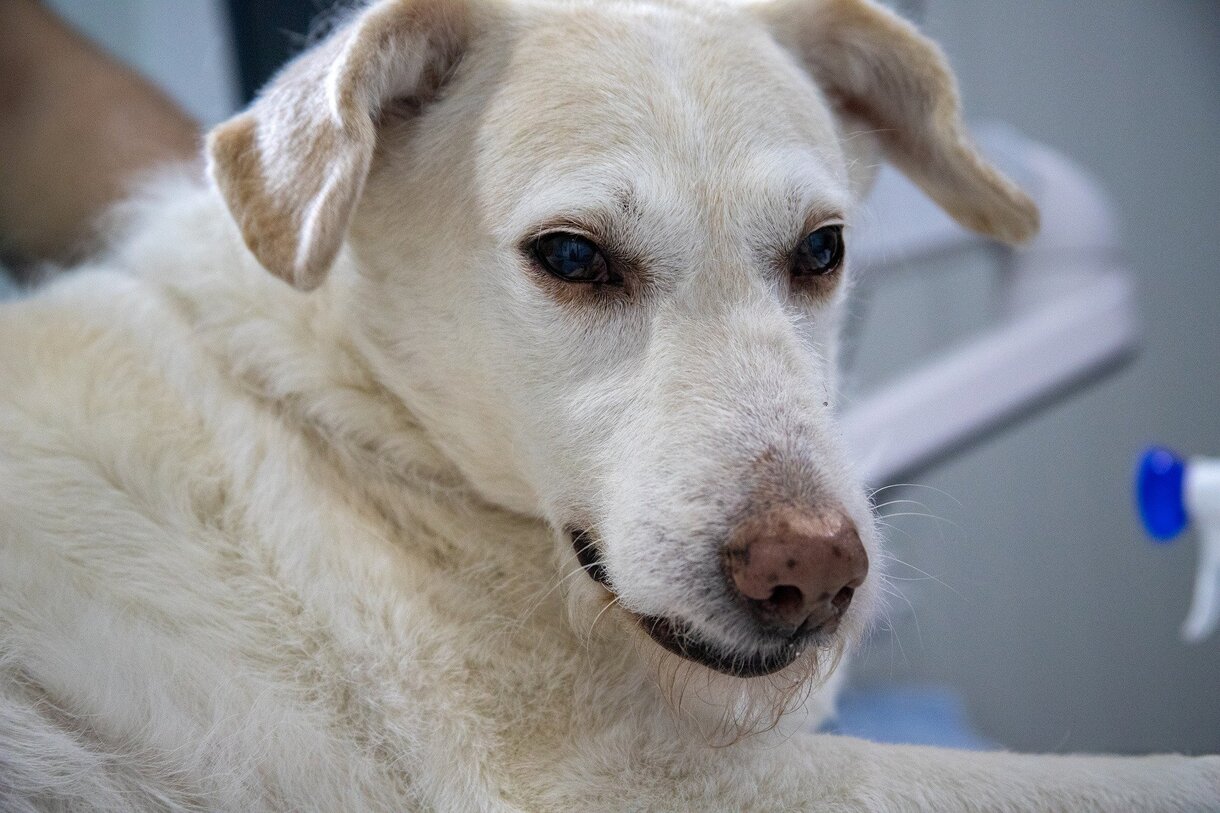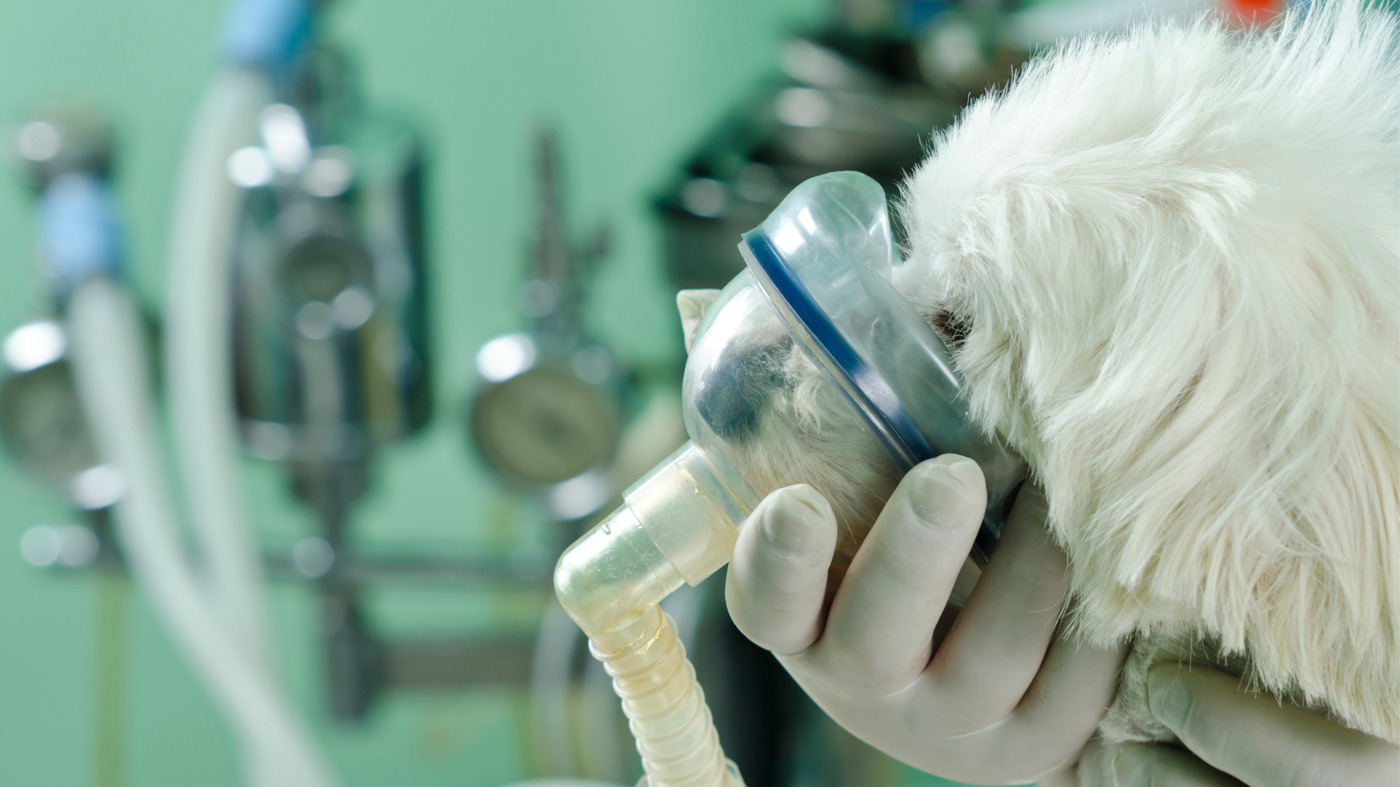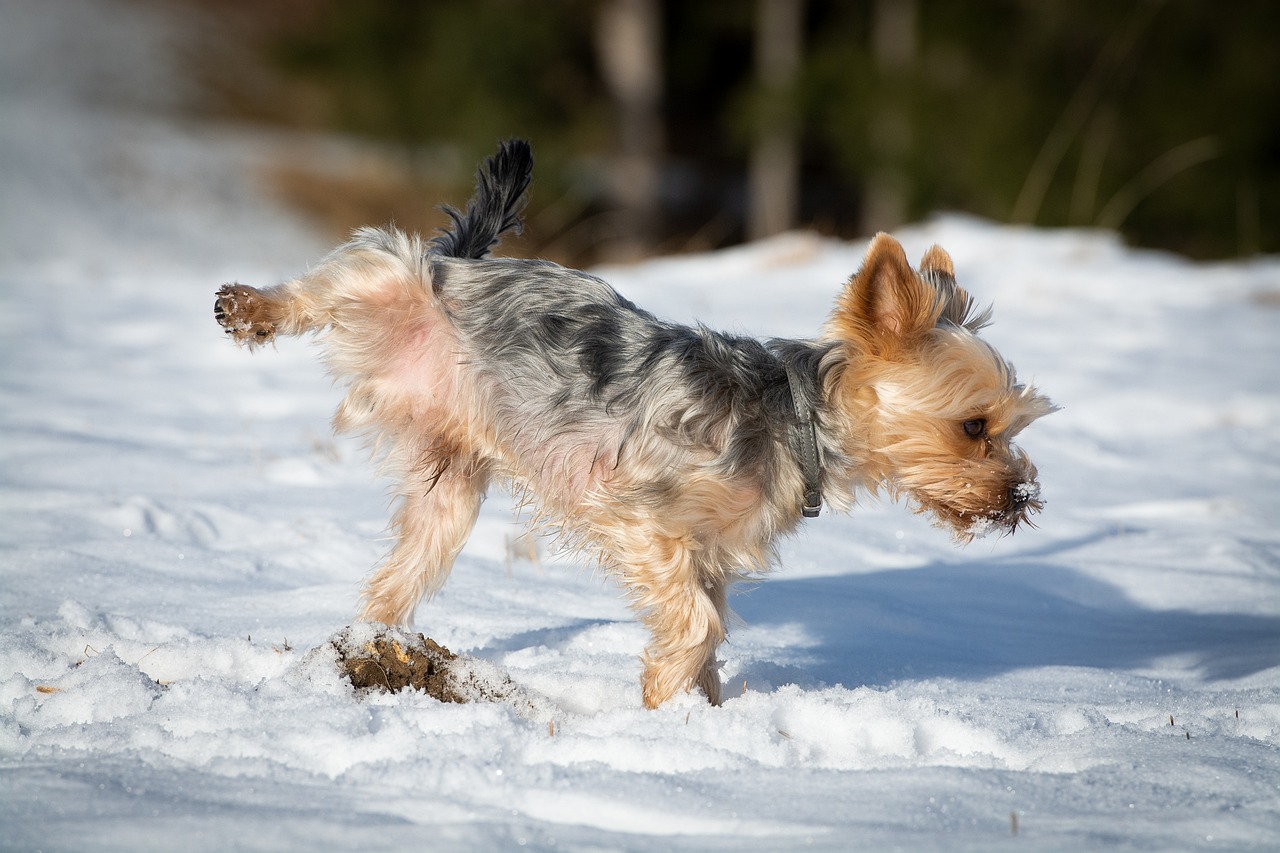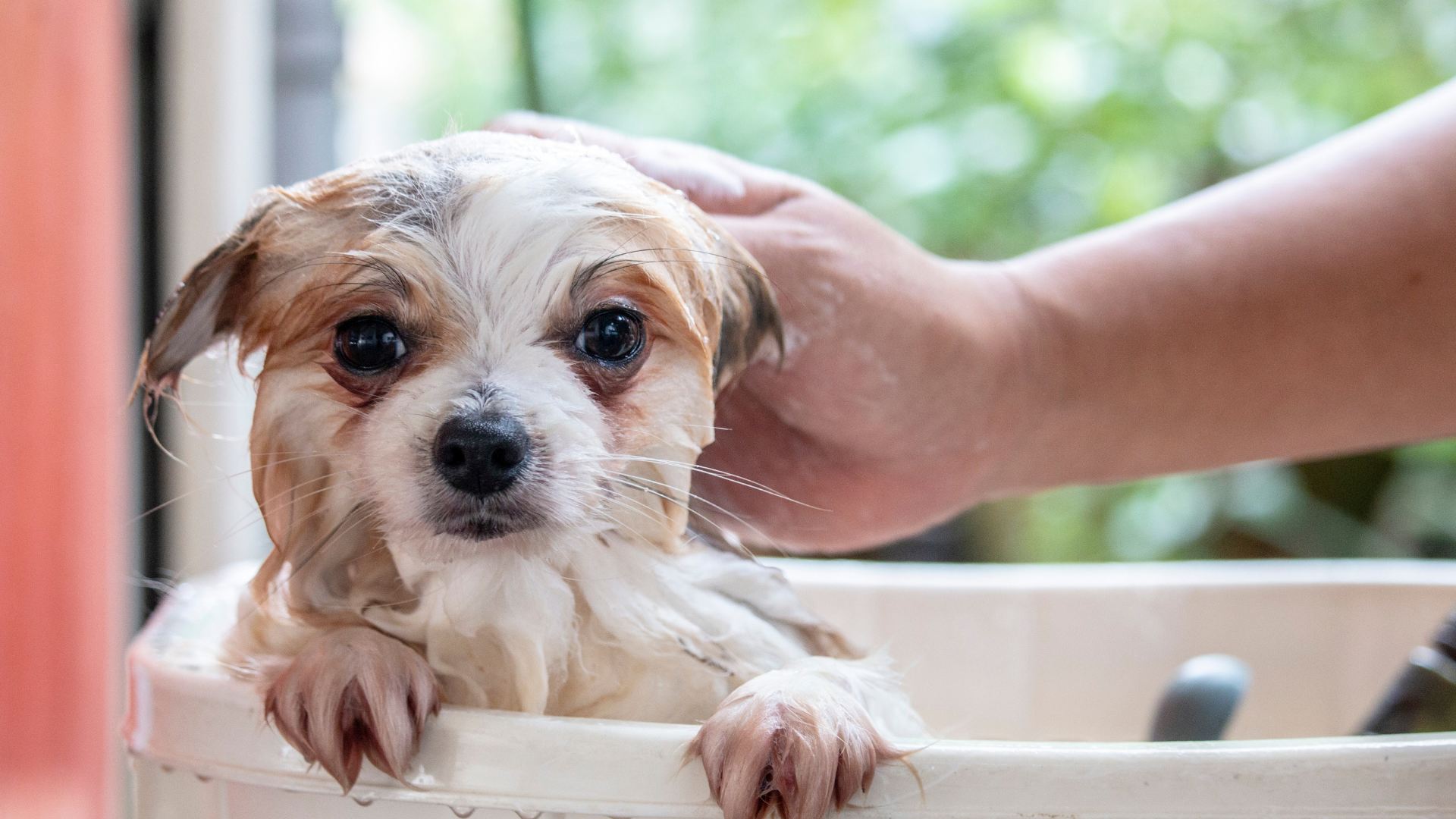Home>Health & Wellness>Common Health Issues>How To Help Dogs With Pollen Allergies


Common Health Issues
How To Help Dogs With Pollen Allergies
Published: January 26, 2024
Learn how to manage pollen allergies in dogs and other common health issues with our expert tips and advice. Help your furry friend live a happier, healthier life.
(Many of the links in this article redirect to a specific reviewed product. Your purchase of these products through affiliate links helps to generate commission for Pawsomeoldies.com, at no extra cost. Learn more)
Table of Contents
Understanding Pollen Allergies in Dogs
Pollen allergies, also known as seasonal allergies or allergic rhinitis, are not exclusive to humans. Dogs can also suffer from pollen allergies, causing discomfort and distress. Pollen is a fine powder produced by plants during their reproductive cycle. While it plays a crucial role in plant reproduction, it can trigger allergic reactions in dogs when inhaled or when it comes into contact with their skin.
When dogs with pollen allergies are exposed to pollen, their immune system identifies it as a threat and releases histamines to combat it. This immune response leads to various symptoms, such as itching, sneezing, watery eyes, and skin irritation. The severity of these symptoms can vary from mild to severe, depending on the individual dog and the specific allergens they are sensitive to.
It's important to note that pollen allergies can be seasonal, with symptoms flaring up during specific times of the year when certain plants are in bloom. However, some dogs may also experience year-round symptoms if they are allergic to indoor plants or other environmental allergens.
Understanding the specific pollen allergens that affect your dog is crucial for effective management. Common pollen allergens for dogs include grasses, trees, and weeds. Identifying the specific allergens that trigger your dog's symptoms can help in developing a targeted approach to minimize exposure and alleviate discomfort.
In some cases, pollen allergies can also exacerbate existing skin conditions in dogs, such as atopic dermatitis. This can lead to intense itching, redness, and skin lesions, further impacting the dog's quality of life.
By recognizing the impact of pollen allergies on dogs and understanding the underlying mechanisms, pet owners can take proactive steps to minimize their furry companions' exposure to allergens and provide relief from allergy symptoms.
Read more: Dog With Allergies – What Shampoo Would Help
Identifying Symptoms of Pollen Allergies in Dogs
Identifying the symptoms of pollen allergies in dogs is crucial for timely intervention and effective management of their discomfort. While dogs may exhibit varying reactions to pollen allergens, there are common signs that pet owners can look out for to determine if their furry companions are suffering from pollen allergies.
-
Skin Irritation: One of the primary indicators of pollen allergies in dogs is skin irritation. This can manifest as excessive scratching, licking, and chewing of the skin, particularly in areas such as the paws, abdomen, and ears. The skin may appear red, inflamed, and may develop hot spots or lesions due to the dog's persistent attempts to alleviate the itching.
-
Itching and Scratching: Dogs with pollen allergies often experience intense itching, which can be distressing for both the pet and the owner. Persistent scratching, especially if it leads to hair loss or the development of scabs, is a clear indication of allergic reactions to pollen.
-
Watery Eyes and Sneezing: Similar to humans, dogs with pollen allergies may exhibit symptoms such as watery eyes and frequent sneezing. These signs are particularly noticeable during peak pollen seasons when the allergen concentration is higher.
-
Ear Infections: Pollen allergies can also contribute to ear infections in dogs. Pet owners should be vigilant for signs of ear irritation, such as redness, odor, and increased discharge. Dogs may also shake their heads or tilt them to one side due to discomfort.
-
Respiratory Distress: Some dogs may display respiratory symptoms when exposed to pollen, including coughing, wheezing, and labored breathing. These signs indicate that the allergens have triggered an inflammatory response in the respiratory system.
-
Digestive Upset: In certain cases, pollen allergies can lead to digestive issues in dogs, such as vomiting and diarrhea. While these symptoms are less common, they can occur as part of the overall allergic response.
By closely observing their dogs for these symptoms, pet owners can gain valuable insights into the presence of pollen allergies. It's important to note that these symptoms may overlap with other health conditions, so consulting a veterinarian for a comprehensive evaluation is essential for accurate diagnosis and tailored treatment plans.
Understanding and recognizing these symptoms empower pet owners to take proactive measures to alleviate their dogs' discomfort and improve their overall well-being.
Tips for Minimizing Exposure to Pollen
Minimizing a dog's exposure to pollen is essential for managing pollen allergies and alleviating the associated symptoms. By implementing proactive measures, pet owners can create a more comfortable environment for their furry companions, especially during peak pollen seasons. Here are effective tips for minimizing a dog's exposure to pollen:
-
Limit Outdoor Activities: During high pollen count days, it's beneficial to reduce the duration of outdoor activities for dogs. Opt for shorter walks and avoid areas with dense vegetation or blooming plants. Additionally, scheduling outdoor activities during times when pollen levels are lower, such as early morning or late evening, can help minimize exposure.
-
Regular Grooming: Regular grooming practices can significantly reduce the amount of pollen that accumulates on a dog's fur. Brushing the coat and wiping the paws after outdoor excursions can help remove pollen particles, preventing them from being spread throughout the living spaces.
-
Clean Living Spaces: Keeping indoor living spaces clean is crucial for minimizing the presence of pollen. Regular vacuuming, dusting, and washing of pet bedding can help reduce the accumulation of pollen indoors. Using air purifiers with HEPA filters can also aid in capturing airborne pollen particles, improving indoor air quality.
-
Pollen-Free Retreat: Creating a designated pollen-free retreat within the home provides a safe haven for dogs during peak pollen seasons. This area should be kept well-ventilated and free from indoor plants to minimize allergen exposure.
-
Allergy-Friendly Landscaping: If feasible, consider landscaping the outdoor environment with allergy-friendly plants that produce minimal pollen. Consult with a professional landscaper to create a dog-friendly outdoor space that minimizes exposure to common pollen allergens.
-
Rinse After Outdoor Activities: After outdoor excursions, rinsing the dog's coat with plain water can help remove any residual pollen. Paying particular attention to the paws, face, and ears can prevent the transfer of pollen to indoor surfaces.
-
Consult with a Veterinarian: Seeking guidance from a veterinarian is crucial for developing a comprehensive approach to managing pollen allergies in dogs. Veterinarians can provide personalized recommendations, including allergy testing and potential treatment options to alleviate symptoms.
By implementing these practical tips, pet owners can effectively minimize their dogs' exposure to pollen, creating a more comfortable and allergy-friendly environment for their beloved pets. These proactive measures contribute to the overall well-being of dogs with pollen allergies, allowing them to enjoy a higher quality of life despite environmental allergens.
Home Remedies for Soothing Pollen Allergy Symptoms
When dogs experience discomfort due to pollen allergies, pet owners often seek natural and home-based remedies to alleviate their furry companions' symptoms. While it's important to consult with a veterinarian for comprehensive guidance, several home remedies can provide relief and support the well-being of dogs with pollen allergies.
1. Oatmeal Baths
Oatmeal baths are a soothing and effective remedy for relieving skin irritation and itchiness in dogs with pollen allergies. Oatmeal possesses anti-inflammatory properties that can help calm irritated skin and reduce itching. To prepare an oatmeal bath, finely grind plain, unflavored oatmeal into a powder and mix it with warm water to create a gentle, skin-soothing solution. Bathing the dog in this oatmeal-infused water can provide immediate relief and promote skin healing.
Read more: How Do Service Dogs Help With Allergies
2. Honey
Local, raw honey is known for its potential to alleviate allergy symptoms in both humans and dogs. When sourced from local beekeepers, honey may contain trace amounts of pollen from local plants. Introducing small amounts of local honey into a dog's diet can potentially help build tolerance to local pollen allergens over time. However, it's essential to consult with a veterinarian before incorporating honey into a dog's diet to ensure it is safe and appropriate for the individual pet.
3. Coconut Oil
Coconut oil offers multiple benefits for dogs with pollen allergies. When applied topically, it can help moisturize and soothe irritated skin, reducing the discomfort associated with allergic reactions. Additionally, when ingested in moderate amounts, coconut oil may support the dog's immune system and contribute to overall skin health. Pet owners should consult with a veterinarian to determine the appropriate dosage and application of coconut oil for their dogs.
4. Herbal Rinses
Herbal rinses, such as chamomile or green tea infusions, can be used to soothe irritated skin and provide relief from itching. These herbal solutions can be applied topically to affected areas or used as a final rinse after bathing the dog. Chamomile and green tea possess anti-inflammatory and antioxidant properties that can aid in calming the skin and reducing allergic reactions.
5. Omega-3 Fatty Acids
Incorporating omega-3 fatty acid supplements into a dog's diet can help support skin health and reduce inflammation associated with pollen allergies. Omega-3 fatty acids, commonly found in fish oil supplements, have been shown to have anti-inflammatory properties that may benefit dogs with allergic skin conditions. Consulting with a veterinarian to determine the appropriate dosage and source of omega-3 supplements is crucial for ensuring their effectiveness and safety.
By integrating these home remedies into a comprehensive approach to managing pollen allergies in dogs, pet owners can provide natural relief and support for their furry companions. However, it's important to emphasize that while these remedies can offer symptomatic relief, they are not substitutes for professional veterinary care. Veterinary guidance is essential for accurately diagnosing and addressing pollen allergies in dogs, ensuring their long-term health and well-being.
Read more: Which Probiotics Will Help A Dog’s Allergies
When to Seek Veterinary Care for Pollen Allergies
Recognizing the appropriate time to seek veterinary care for dogs with pollen allergies is crucial for ensuring their well-being and effectively managing their allergic symptoms. While home-based remedies and proactive measures can provide relief, there are specific circumstances that warrant professional veterinary attention.
-
Persistent or Severe Symptoms: If a dog exhibits persistent or severe symptoms of pollen allergies, such as relentless itching, inflamed skin, or respiratory distress, it is imperative to seek veterinary care promptly. These symptoms may indicate an intense allergic response that requires professional intervention to alleviate the dog's discomfort and prevent potential complications.
-
Unresponsive to Home Remedies: In cases where home remedies and environmental management strategies fail to provide significant relief for a dog's pollen allergy symptoms, consulting a veterinarian is essential. Veterinary professionals can conduct a comprehensive assessment to identify the underlying causes of the allergic reactions and recommend appropriate treatment options tailored to the individual dog's needs.
-
Secondary Skin Infections: Pollen allergies can predispose dogs to secondary skin infections due to their persistent scratching and skin irritation. If a dog develops skin lesions, hot spots, or signs of bacterial or fungal infections as a result of pollen allergies, veterinary care is necessary to address the underlying allergic condition and manage the secondary infections effectively.
-
Impact on Quality of Life: When pollen allergies significantly impact a dog's quality of life, causing distress, discomfort, and interfering with their daily activities, it is a clear indication to seek veterinary care. Veterinarians can assess the extent of the allergic reactions and develop comprehensive management plans to improve the dog's overall well-being and comfort.
-
Chronic or Recurrent Symptoms: Dogs experiencing chronic or recurrent pollen allergy symptoms, regardless of seasonal variations, should be evaluated by a veterinarian. Chronic allergic reactions can have long-term implications for a dog's health, and veterinary intervention is crucial for establishing sustainable management strategies to minimize the impact of pollen allergies on the dog's life.
-
Allergy Testing and Immunotherapy: Veterinary care is essential for conducting allergy testing to identify specific pollen allergens affecting a dog. Based on the results, veterinarians can recommend targeted immunotherapy, which involves desensitizing the dog to specific allergens, thereby reducing the severity of allergic reactions over time.
By recognizing these circumstances that warrant veterinary care for dogs with pollen allergies, pet owners can prioritize their furry companions' health and well-being. Seeking professional veterinary guidance ensures accurate diagnosis, personalized treatment plans, and ongoing support to effectively manage pollen allergies and enhance the overall quality of life for dogs.
